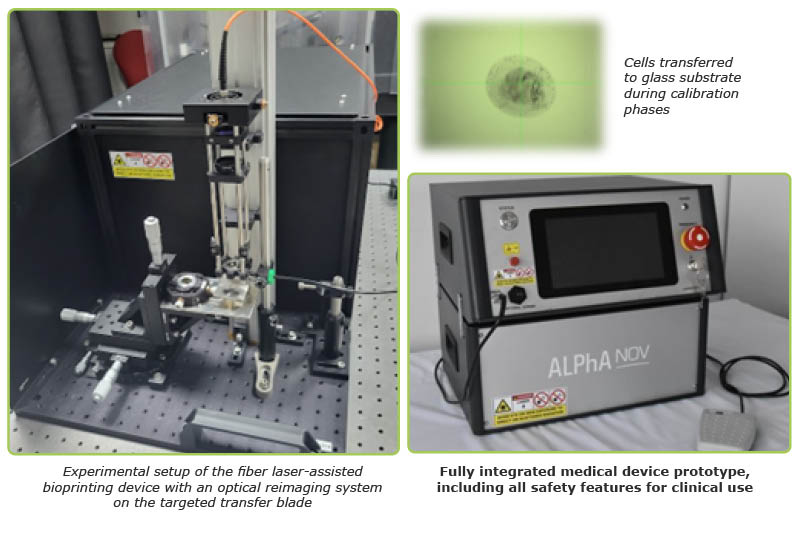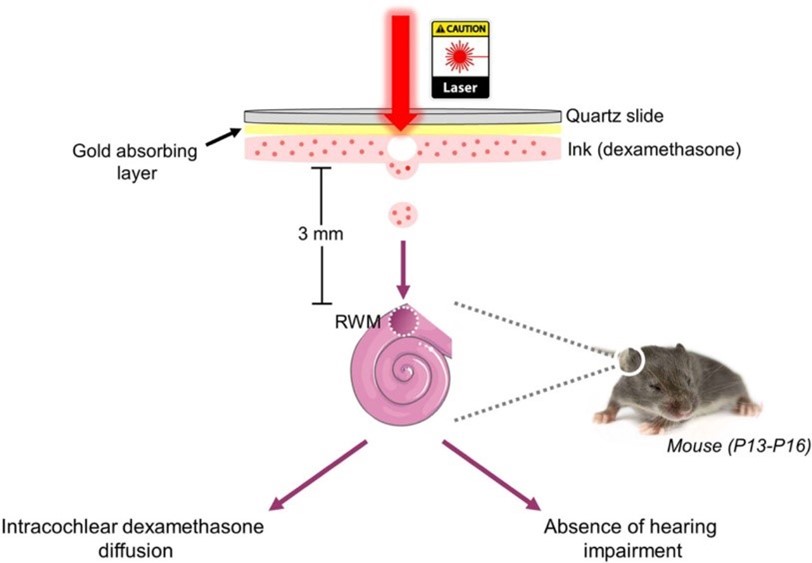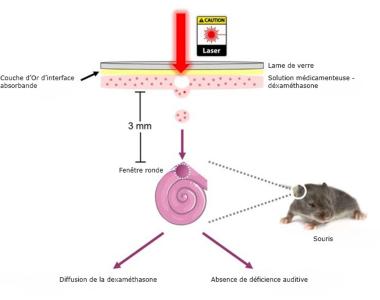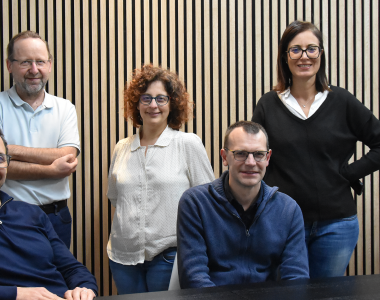News
BioImpress - Innovation in targeted therapy for hearing disorders
Initiated in 2021 by Dr. Damien Bonnard, medical head of the audiology unit at CHU de Bordeaux (ENT service), and Prof. Raphaël Duvillard, hospital practitioner and university professor (CHU de Bordeaux, Université de Bordeaux, INSERM), the BioImpress maturation project aimed to develop a targeted therapy to threat hearing disorders. Supported by an investment of over €280,000 from SATT Aquitaine Science Transfert, including international intellectual property protection, the project's ambition was to precisely deliver therapeutic agents using laser-assisted bioprinting. This technology, enabling minimally invasive surgery, is designed to treat inner ear pathologies such as deafness, vertigo and tinnitus.
A new approach to treating deafness using cell bioprinting
According to the World Health Organization, incapacitating hearing loss affects over 5% of the world's population, or 430 million people worldwide, and although solutions such as cochlear implants exist, they are not always effective or accessible. Hearing disorders are very often the result of endo-cochlear lesions, which can be treated with systemic medication due to the lack of curative treatment. Nonetheless, one of the main challenges is to find a reliable and atraumatic method of delivering large quantities of therapeutic agents through the intra-cochlear wall. Cellular bioprinting is emerging as a promising alternative for regenerating damaged auditory tissue.
Against this backdrop, the aim of the project was to develop a compact and fully fibered laser technology. This technology aims to precisely deliver therapeutic agents directly into the inner ear, facilitating cochlear cell penetration and paving the way for more effective treatments.
Design of a compact laser prototype for targeted, minimally invasive bioprinting
The heart of the project lies in the design of a compact, fully fibered laser prototype for minimally invasive surgery.
Unlike most laser-assisted cell bioprinting technologies, which use free propagation, the aim here is to enable bioprinting directly via the ear canal. The device incorporates fiber-optic probes that deliver therapeutic agents encapsulated in specific cartridges. Thanks to laser technologies, agent delivery is precise and controlled, minimizing the risk of damage to surrounding tissues. The team also worked on optimizing laser parameters and cartridge design to maximize the device's effectiveness.

During the first year of the project, ALPhANOV created an initial mock-up to validate laser parameters and the first versions of cartriges containing the therapeutic agent to be bioprinted.
After two years of research and development, ALPhANOV developed a working prototype, based on specifications drawn up jointly with clinicians. Preliminary tests showed promising results for the ability of therapeutic agents to migrate through the intracochlear wall, with a high volume of dexamethasone (the therapeutic agent used) found in the perilymph compared with the volume deposited. This result is particularly noteworthy when compared with conventional methods, such as slow diffusion or trantympanic injections, which can be more traumatic.
Finally, auditory tests on mice have demonstrated a significant improvement in auditory cell regeneration.
Scientific paper
- "Proof of concept of intracochlear drug administration by laser-Assisted Bioprinting in mice"
Manon Jaffredo, Océane Duchamp, Nicolas Touya, Yohan Bouleau, Didier Dulon, Raphael Devillard, Damien Bonnard.

Prospects and applications
This project marks a major step forward in the development of minimally invasive solutions for the delivery of therapeutic agents, based on the laser-assisted bioprinting technique. The technology developed could offer a sustainable, less invasive solution for people suffering from hearing loss.
Prospects include pre-clinical trials to assess the therapeutic contribution in mouse models. In addition, this method of vectorizing therapeutic agents is compatible with the use of gene therapies.


